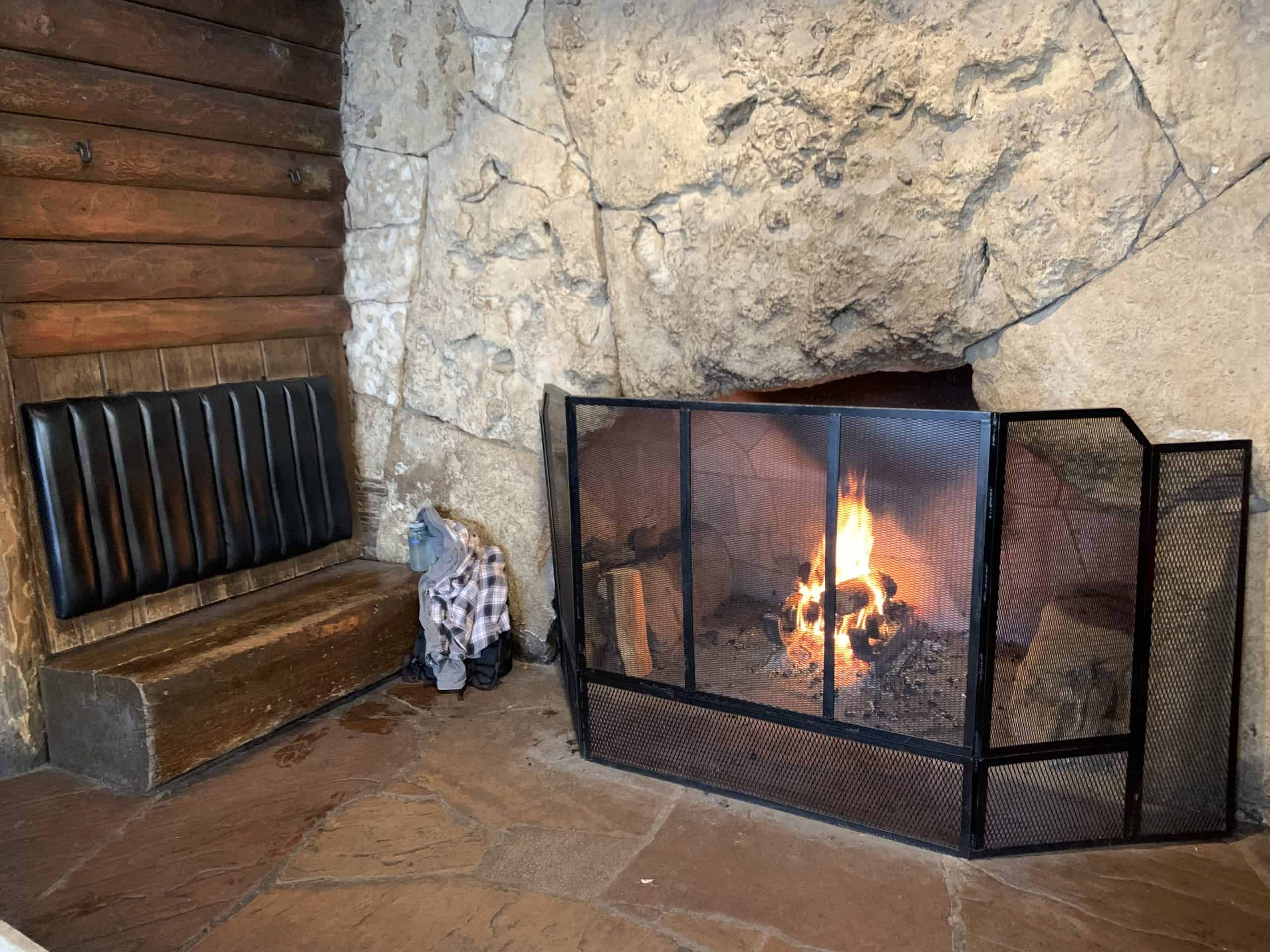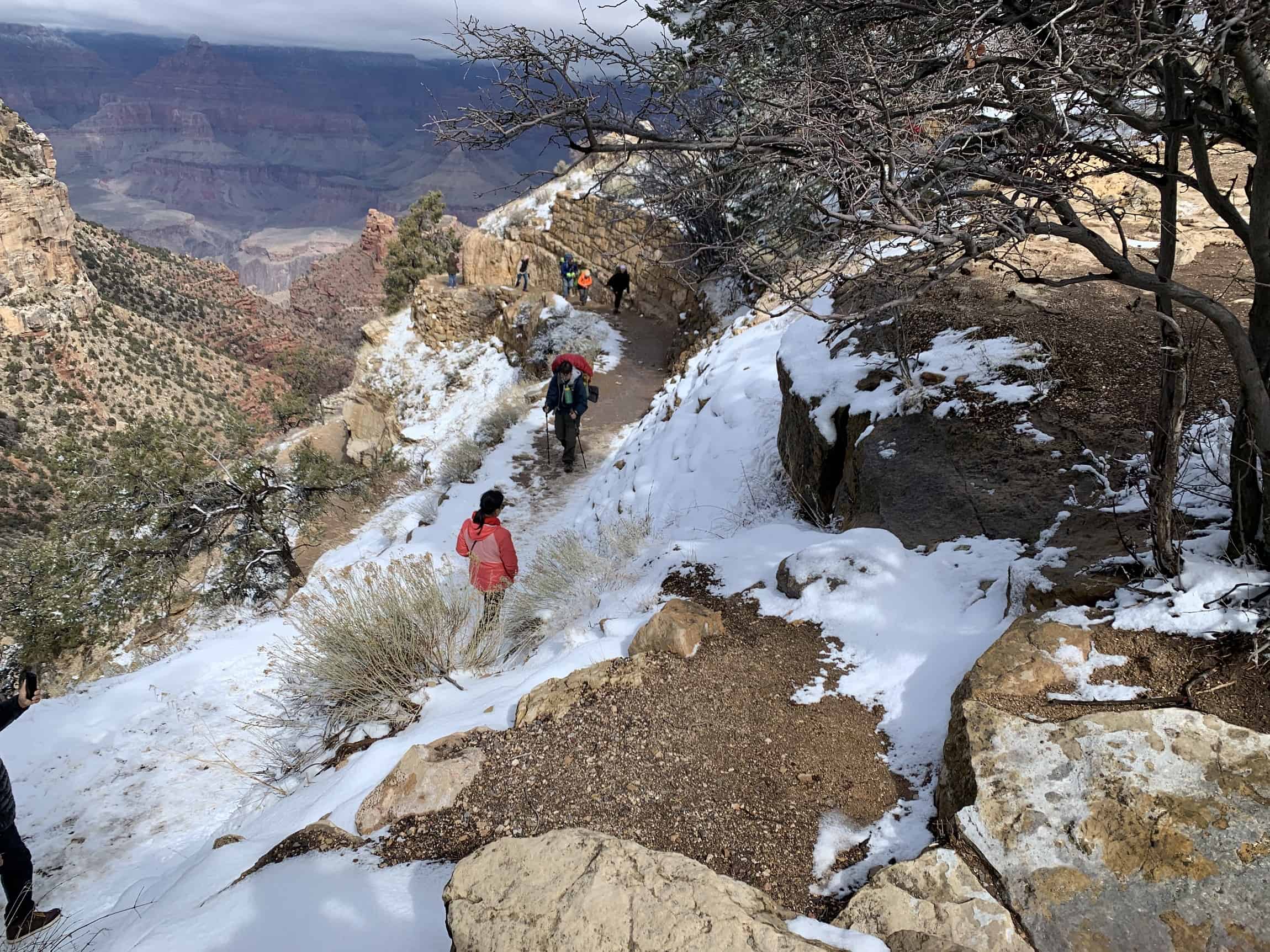Last Updated on November 1, 2024 by Dawn Head
If you are planning a trip to the South Rim of the Grand Canyon in the winter, you’re in for a memorable experience. While most people think of the Grand Canyon as the perfect summer road trip destination, some say it’s even better in the winter.
You will be able to enjoy mild temperatures, light crowds, and greater availability.
There are amazing things to do on the South Rim in this inviting season. In fact, there are some great experiences in this majestic location you can only have during the wintertime.
Natural Wonders of North America to Visit
South Rim of the Grand Canyon in the winter
While the canyon can be accessed from both the North Rim and the South Rim, it’s the South Rim that’s the most popular.
The South Rim also is open during the winter while the North Rim is closed.
Visiting Grand Canyon South Rim in the winter
Grand Canyon National Park provides easy access to the site. The park offers many services, visitor centers and trails.
The South Rim is located 80 miles northwest of Flagstaff and 60 miles north of Williams, AZ.
Visiting during the winter means there won’t be a long line of cars waiting to get in the Grand Canyon. There are several stations to enter, and it does move quickly. However, in winter there will be many less people.
It’s also possible to access the canyon through the Grand Canyon-Parashant National Monument, the Kaibab National Forest and various Indian reservations.
National Park Pass
You may decide to pay the daily vehicle fee or purchase a park pass. The America the Beautiful National Parks and Federal Recreational Lands Pass is valid at 2,000+ locations across the United States.
If you are on a road trip and will be visiting other National Parks in the area, it will be worth it. In addition, if you will be entering the Grand Canyon more than one day, it also may be worth it.
There are discounted passes for seniors, etc. We recommend buying it at the booth instead of online because the pass is valid for one year.
Grand Canyon South Rim
One of the best parts of visiting the South Rim is that it never closes. It’s open 24-hours-a-day, 365-days-a-year. This is the side and the area most tourists visit. One of the reasons is because it’s the most accessible part of the Grand Canyon.
There is lots to explore for all abilities. You can walk to many view points as well as drive. For those who would enjoy a more authetic experience, there’s hiking, backpacking, and more.
What’s also wonderful is you can stay for a few hours or for several days.
From Grand Canyon Village and the Grand Canyon Railway to Hermits Rest and Desert View, you will enjoy many things as you discover the South Rim.
Here’s a look at some of the best things to do on the South Rim of the Grand Canyon in the winter.
When you first arrive to the South Rim
Once you pay or use your pass and drive in, you will find ample parking. This is the hub of the the national park. It’s called Mather Point.
Mather Point / Visitor Center
You will see the Grand Canyon Visitor’s Center along with a nice outside area to meet your group. After driving, this is a good time to get the lay of the land and make sure you have everything you wanted to bring from your car.
This is a great meeting spot if you are meeting others and/or to meet up with your group later. There are restrooms there as well.
You will likely be excited to walk up right away to be astounded by the glory of the Grand Canyon. Mather Point is one of many lookout areas with canyon vistas.
The Visitor Center has a theater with an interpretive film that runs every half hour. There are also educational, interactive displays in the building.
This is a great spot to plan your day as well as talk to guides and park rangers to ask about things to do and about the Grand Canyon. You can get maps and souvenirs as well.
Grand Canyon with kids in the winter
No matter when you visit, be sure to have your children participate in the Junior Ranger Program. Go to the Visitor’s Center with them to collect the free book.
Children complete various tasks and answer questions based on their age. Because it’s age appropriate, all ages — including teens — will learn something.
When they finish, they bring it back and will be sworn in as a Junior Ranger. They will earn a pin which they can be proud of; it makes for a great souvenir as well.
Viewpoints using the park shuttle
If the Grand Canyon is covered in snow, you should consider taking the free shuttle bus. This area is the main transit center for the park. You will have to walk for about five minutes until you get to Mather Point. There, you can hop on the shuttle.
Drive to different viewpoints
If snow is not a factor, driving to different viewpoints around the South Rim of the Canyon is a great idea. Basically, you have two choices:
- Head east toward Desert View
- Head west through Grand Canyon Village and out towards Hermit’s Rest
There are many pull-off spots no matter which way you choose. You can decide to stop and get out or keep going. Driving through an easy way to see more of the viewpoints.
Explore Grand Canyon Village
The main section of the South Rim is called Grand Canyon Village. It has three main areas:
- Mather Point / Visitor’s Center
- Market area with store; it’s close to Mather Campground
- Historic area with Verkamp’s Visitor Center
A steam-powered train first visited Grand Canyon’s South Rim in 1901. A community began developing around the depot, and that village is well-preserved for visitors today to explore.
Verkamp’s Visitor Center is one of the main attractions in the village. Once the family home and curio shop of the Verkamp family, the structure now serves as one of the park’s visitor centers. Inside, you’ll find the Grand Canyon Association’s informative museum and bookstore.
Also of note in the village is the Hopi House, which is built of stone masonry to resemble a traditional abode of the native Hopi people. The house was completely restored in the 1990s, making it a remarkable place to visit.
There are various historic restaurants and hotels where the food is good and the environment is relaxing.
Consider booking a stay at one of the village’s historic hotels. The El Tovar and the Bright Angel Lodge have been in business for well more than 100 years, providing a unique experience with rustic touches.
If you’re visiting in the winter, you’ll have a better chance of being able to secure a room than you would in the spring, summer, and fall.
Hike the South Rim Trail
Hiking the South Rim trail provides an amazing opportunity to see some spectacular viewpoints. While the trail stretches for 13 miles from the South Kaibab trailhead to Hermit’s Rest, it isn’t necessary to hike the entire distance.
This is an easy, mostly level and well-marked trail. It can be icy and slippery in the winter, so it’s best to use caution.
You can access the trail from Grand Canyon Village or from Hermit Road.
While a shuttle bus operates from March through November, this service is not available in the winter. Instead, hikers may drive along Hermit Road to access different parts of the trail. Keep in mind that portions of the road may close periodically due to the weather.
Hiking on the Bright Angel Trail
One of the best ways to experience the majesty of the Grand Canyon is to go below the rim. You can access the Bright Angel Trail in Grand Canyon Village. It descends 4,380 feet along its 9.5 mile-length. There are many switchbacks and it’s mostly single file.
Once again, it isn’t necessary to hike the entire trail to get the full effect. Keep in mind that however far you go down, you’ll have to hike back up again!
If you don’t want to hike, then consider taking a mule ride into the canyon. It’s an experience you’ll never forget.

Winter camping in the Grand Canyon
You can camp at Mather Campground which is off South Entrance Road on the way to the entrance at Mather Point. In addition, you can camp at the bottom of the Grand Canyon.
Be sure to access a permit in advance if you plan to camp. There are guidelines as to how many people they allow. If you are ambitious, you can backpack down. Otherwise, you can travel by mule. Another option is to have the mule take your belongings while you hike down, camp, and then hike back up.
Hike from the South Rim to the North Rim
During the winter, most areas in the North Rim of the Grand Canyon are closed. However, there are various roads and paths that stretch from the South Rim Grand Canyon to the North Rim.
If you like hiking, you can take one of these paths and go to one of the various viewpoints near the North Rim and then back to the South Rim Grand Canyon.
A great option is taking the Rim Trail. This popular trail stretches for over 12 miles from Hermit’s Rest to the South Kaibab Trailhead area.
Tour the Yavapai Museum of Geology
Found in the Yavapai Observation Station, this fascinating collection provides a great place to visit. Be sure to see it, especially if the weather is windy and cold. Picture windows give you a stunning view on clearer days.
Explore Desert View
A settlement 25 miles east of Grand Canyon Village, Desert View promises some of the best views in the region. Check the schedule for cultural demonstrations and park ranger programs. These are presented on a limited basis in the winter.
If you are able to climb stairs, you can make your way to the top of the Desert View Watchtower and tour the Tusayan Museum to learn more about Native American tribes in the region.
Watch the sunset
The sunsets in the Grand Canyon during the winter glorious. Try to plan your visit so you can watch one from start to finish. Because the days are shorter during this season of the year, it’s very easy to catch an entire sunset right before dinner.
Without a doubt, one of the best ways to see the sunset at the Grand Canyon is Mather Point.
If you are willing to go farther, however, I recommend checking out other historical viewpoints such as Hopi Point and Yavapai Point.
Board the Grand Canyon Railway
If you don’t want to drive into the Grand Canyon National Park, another great option is taking the train there. You’ll find the depot for the Grand Canyon Railway in Williams, Arizona.
It allows you to see the beauty of the location closely and attentively, and it drops you off right at an ideal spot in the historic South Rim.
The train travels north, taking you on a magical journey to the South Rim in the National Park.
Expect the trip to take about two hours and 15 minutes each way.
It’s a leisurely and fun way to sightsee during your winter visit to the Grand Canyon. By taking the railway, you won’t have to worry at all about driving in potential snow.
Tips for visiting the Grand Canyon in the winter
Weather can change quickly so it’s important to come to the Grand Canyon prepared. Plan to carry a daypack you can take with you while sightseeing. You can leave extra, emergency clothing, water, snacks, etc. in your car.
What to bring to the Grand Canyon
- Wear several layers of clothing
- If possible, wear waterproof hiking boots
- Bring a filled, reusable water bottle
- If you are planning on going hiking after a snowstorm, use hiking poles
- Even if it seems counter intuitive, wear sun protection when going hiking or sightseeing
Grand Canyon facts
Until you are at the Grand Canyon, it’s hard to imagine the scope and scale. One of the best things about visiting is the opportunity to learn more about this impressive landscape feature.
The Grand Canyon winds through Arizona, stretching 277 miles long and plunging as deep as one mile. Depending upon where you are along the canyon, it can stretch as wide as 18 miles across.
It’s the Colorado River that we can thank for carving out this magnificent formation. Winding through the massive Colorado Plateau for eons, the river created a canyon that highlights billions of years of geological history.
For centuries, Native American tribes have created settlements here. The influence and culture of these people is still seen and felt today.
Going to Grand Canyon during winter
In addition to there being many things you can do at the Grand Canyon, there are many advantages to visiting in the winter months. In the South Rim, there are many roads that are closed to private vehicles during much of the year.
In the winter, however, many of these roads are open to private cars, allowing you to take road trips and visit different viewpoints throughout the area.
One of the most notable is Hermit Road, a beautiful pathway that opens from December to February.
Amazing sights
The Grand Canyon in the winter is a sight to be seen. Even when it is not covered in snow, the Canyon has a different look during the winter months.
The sunsets and sunrises are spectacular this time of year. Because it’s lower in the sky, the sun doesn’t set directly over the Canyon, producing beautiful tones of purple, pink and orange.
Sunrises are also notable due to the clarity of the light, particularly right after a snowstorm.
Less crowded
Because many people aren’t aware of the beauty of the wintertime Grand Canyon, the location tends to be less crowded during this time of the year.
As a result, the pace slows down, everything becomes quieter and peace reigns over everything. It’s also easier to secure hotel and restaurant reservations.
Animal watching
Animal lovers will be excited to learn that a large variety of native animals can be spotted in the Grand Canyon in the winter.
Perhaps due to the peaceful climate of the winter, deer, elk, ravens, bighorn sheep, rock squirrels and other animals can be seen very often during this time of the year.
To see the Grand Canyon covered in snow is a sight to behold. However, it’s not all about the view. There are several activities you and your family can partake in during a winter visit to the Grand Canyon.
Generally, the Grand Canyon is not thought of as a winter vacation destination. During the winter, this legendary location changes its colors and imbues itself with a dramatic, beautiful flair that invokes infinity. The air becomes crisp and feels incredibly pure as one of many temperamental snow storms prepare to cover everything in white.
Arizona is a diverse state with different climate and geography. Plan to spend some time to explore. See our travels to Prescott, Tucson, Visiting the Hoover Dam and along the Apache Trail.
Come prepared for any type of weather so you can explore all there is to do. From hikes to breathtaking vistas, you’ll find plenty to enjoy when you visit the South Rim of the Grand Canyon in the winter.

